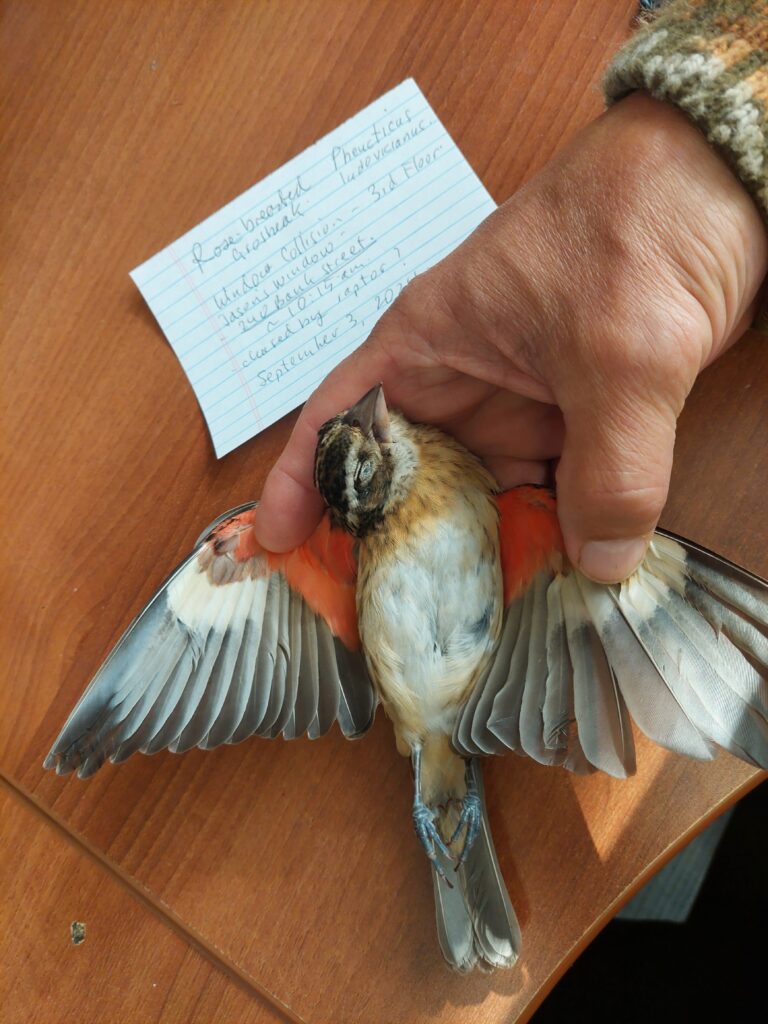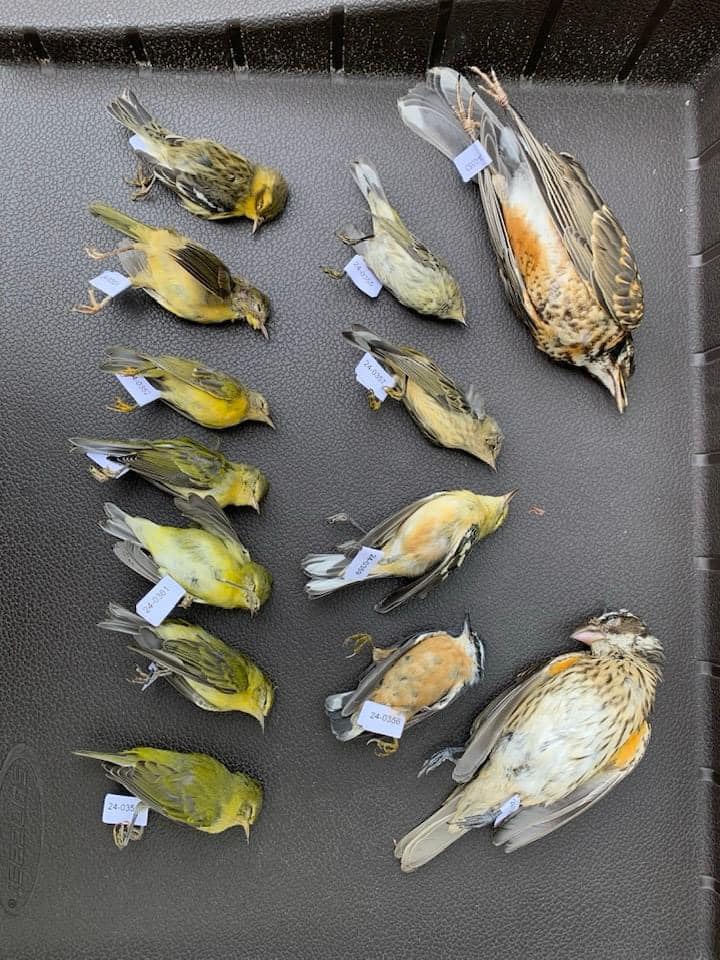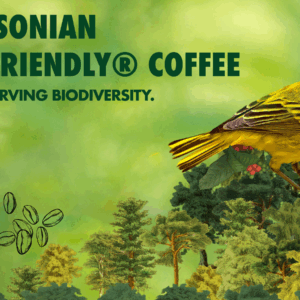A Tragedy Wrapped in Irony
This morning, a deeply unsettling event unfolded just steps away from my office. I had been delivering Bird Friendly City Certificates for the Environment Minister’s signature — one more step in our collective effort to protect birds from urban hazards — when I became an unwitting witness to the very thing I work to prevent.
As I approached our office on Bank Street, a sudden commotion of high-pitched distress calls caught my attention. I looked up just in time to see a bird fall from the sky, landing a couple of metres ahead of me on the sidewalk. A second bigger bird flew off. I rushed forward to find a young male Rose-breasted Grosbeak, still alive but fading quickly. Gently cradling him in my hand, I watched him take his final breaths before succumbing to his injuries.

Photo: The Grosbeak that hit Nature Canada’s office window.
I couldn’t help but wonder: Was this bird struck down by a predator, or had it collided with one of the many glass windows in the very building where I work to advocate for their protection? After locking up my bike, I brought the bird upstairs and, on a hunch, went to check the Bank Street side of our offices. My worst fears were confirmed. There, on the window next to a colleague’s desk, was the unmistakable imprint of the bird’s impact. A few feathers from the unsuspecting victim remained, a reminder of the devastating collision that ended with the Grosbeak’s tragic death.
The irony couldn’t be starker. I had spent my morning championing bird safety, yet here, in the shadow of our own office—a space where we work to protect them—another bird had fallen victim to one of the very threats we fight against.
This incident is just one example of an enormous and growing problem in all cities. A new study estimates that over one billion birds succumb to bird-building collisions in North America.

Photo: Safe Wings Ottawa Collisions in Kanata – August, 2024
Over the past few days, I’ve noticed an influx of migratory birds in my yard in Gatineau — a clear sign of the fall migration. My colleague, Autumn Jordan, told me that Safe Wings Ottawa has been finding large numbers of dead birds around mid-size glass and steel office buildings in Kanata, many of them Rose-breasted Grosbeaks like the one I held today. These birds, drawn to city lights during their nighttime migrations, find themselves confused and disoriented in urban environments. Millions of birds in Canada die from window collisions, while others fall prey to predators or scavengers.
It’s a bitter irony for someone like me, who has devoted a big chunk of my life to making cities safer for birds, to witness such a tragedy firsthand — right at the doorstep of the organization that strives to prevent these very deaths. This moment serves as a stark reminder that we still have much more work to do.
Take Action For Birds and Help Us Turn Tragedy into Change
The tragic death of this young Grosbeak is a reminder of the cruel dangers urban environments pose to birds — but it’s also a call to action. We have the power to reduce these dangers, whether by implementing bird-friendly glass treatments, reducing light pollution, or pushing for stronger protective policies.
Support us in our mission to make cities safer for birds. Help us turn these moments of tragic irony into lasting change.
Source: Rehabilitation outcomes of bird-building collision victims in the Northeastern United States



